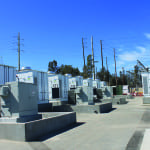Nevada law has included net metering provisions for more than 20 years. Net metering is an arrangement that allows energy generated by a customer’s leased or purchased solar system to offset monthly power bills. It also permits excess energy supplied to the grid to earn credits, which are then automatically applied to future billing periods in which more energy is consumed than produced.
Historically, net metering was a one-for-one transaction in Nevada. For every kWh supplied to the grid, a credit was given to the customer for one kWh in the future. The scheme changed in 2015 when the Nevada Public Utilities Commission (PUC) created a laddered approach that ratcheted down the value of customer-generated energy over a period of years to about 2¢/kWh, which was much less than the retail rate of about 11¢/kWh. The change effectively stopped all construction on new residential rooftop solar systems.
Through Assembly Bill 405 (AB 405), the Nevada Legislature modified the net metering rate structure effective June 15, 2017. The bill allows Nevadans who choose to net meter to fall under a rate structure codified in the law. The rate structure applies to renewable energy systems of 25 kW or less, which is typical of a rooftop solar system installed on a home or small business. The net metering rate structure is tiered and will decrease over time as the amount of electricity produced by net metering systems reaches 80-MW benchmarks.
The first tier offers a net metering rate that is 95% of the retail rate. As of April 26, 2018, nearly 20 MW of installed capacity had been applied toward the first 80-MW tier. The net metering rate for the second tier is 88% of the retail rate, with tiers three and four crediting 81% and 75%, respectively.
Furthermore, on March 14, 2018, the PUC approved numerous new time-variant rates pursuant to AB 405. The rates are designed to incentivize the use of battery storage at residential and small commercial sites. Under the new structure, utility customers with battery storage are allowed to shift their grid usage to times when energy is less costly. The result is a reduced load on the system during peak times coupled with energy savings for the customer. The development provides a natural incentive for customers to deploy behind-the-meter battery storage.
Curt Ledford, a Nevada-based attorney with McDonald Carano, who focuses on utility, cooperative, administrative, corporate, and employment law, as well as reliability and general regulatory matters affecting cooperative utilities, spoke in-depth about energy storage, net metering, and other energy matters during an interview for The POWER Podcast. Although Nevada law is his primary expertise, many of the lessons learned in the state can be applied elsewhere.
For more power podcasts, visit The POWER Podcast archives.
—Aaron Larson, executive editor (@AaronL_Power, @POWERmagazine)










